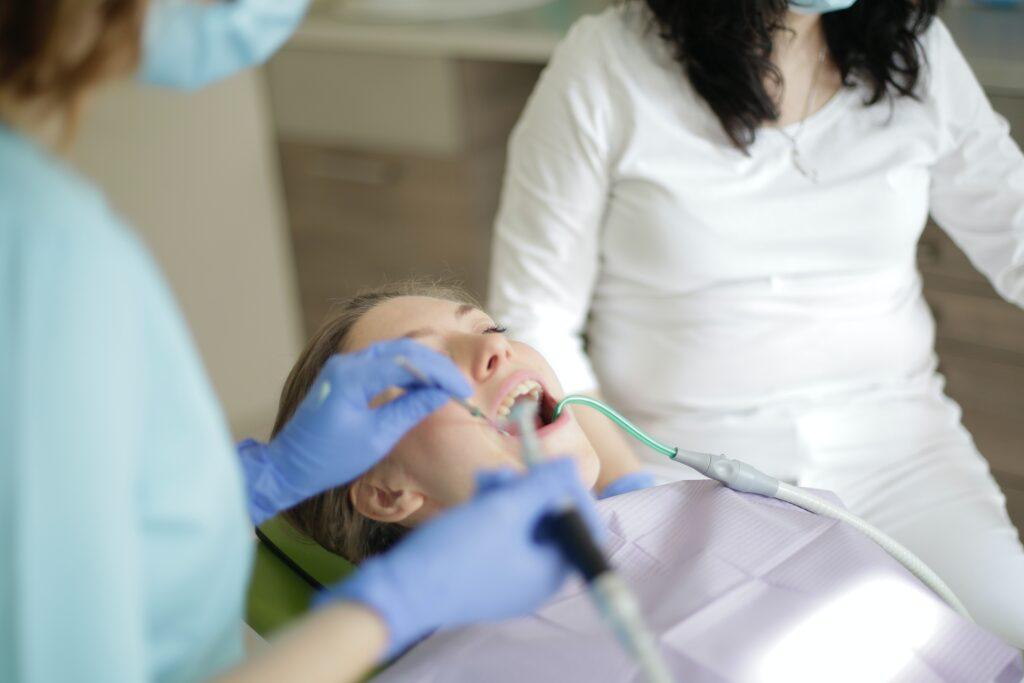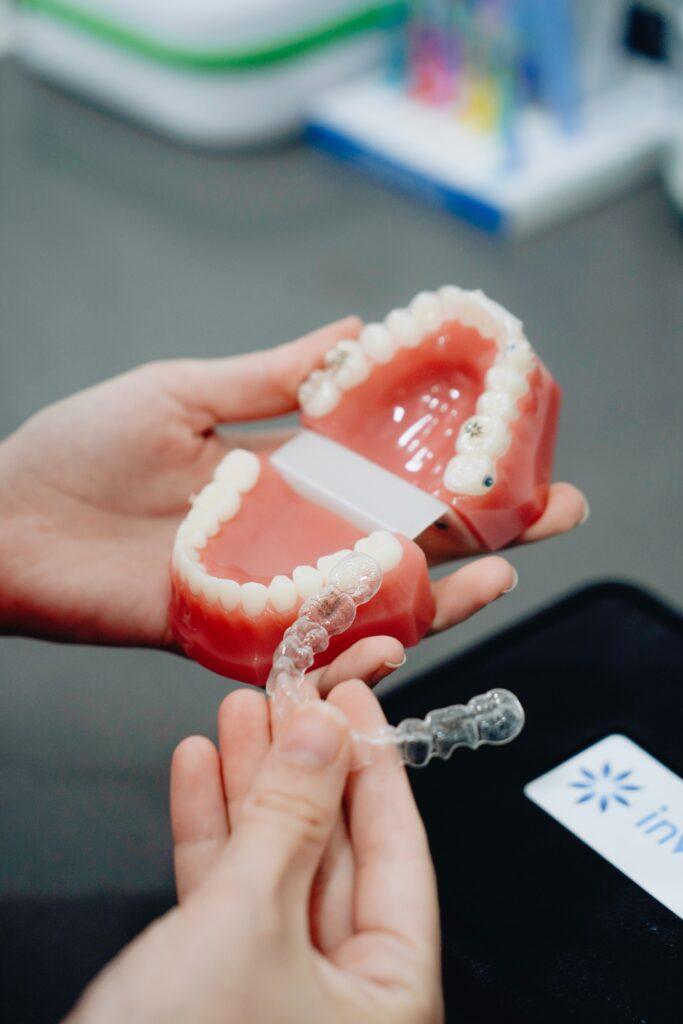How Long Do I Wear Invisalign’s Clear Aligners
Invisalign has emerged as a revolutionary orthodontic treatment, offering a discreet and convenient alternative to traditional braces. Invisalign is in other words a clear aligner orthodontic treatment.
If you’re considering embarking on this transformative journey towards a straighter smile, you’re likely curious about how long the treatment process would take. “How long do I have to wear Invisalign?” is one of the most common questions that patients ponder.
In this comprehensive guide, we’ll delve into the intricacies of Invisalign treatment duration.
Whether you’re just beginning your research or have already started your Invisalign journey, understanding the timeline is crucial for managing expectations and making informed decisions about your orthodontic care.
By the end of this guide, you’ll have a clear understanding of what to expect on your path to a beautifully aligned smile with Invisalign.

Understanding Invisalign Treatment Duration
It is important to recognize that the timeline of Invisalign treatment isn’t a one-size-fits-all scenario. The duration can vary significantly from person to person, contingent on a multitude of factors.
General Timeline
In a broad sense, Invisalign treatment typically spans anywhere from 12 to 18 months. This period allows for the gradual and precise shifting of your teeth into their desired positions. However, it’s crucial to remember that this is merely an estimate. The actual duration will be determined by a variety of unique factors, both biological and behavioral.
Influential Factors
- Complexity of the Misalignment: The degree of misalignment in your teeth plays a pivotal role. More complex cases may require a longer treatment period to achieve optimal results.
- Patient Compliance: Adhering to the prescribed wear schedule is crucial. For Invisalign to work effectively, aligners should ideally be worn for 20 to 22 hours a day. Deviating from this routine can potentially extend the treatment duration.
- Orthodontic Maintenance: Regular check-ups with your orthodontist are integral to monitor progress and make any necessary adjustments. These appointments contribute to the overall timeline.
- Use of Attachments: Some cases may require the use of small, tooth-colored attachments to facilitate specific movements. The presence of attachments can influence the treatment timeline.
- Age and Biology: Younger patients may experience faster tooth movement due to their still-developing oral structures. Additionally, individual biological factors contribute to the pace of alignment.
- Retention Phase: Following the active phase of Invisalign treatment, a retention phase is essential to maintain the results. This typically involves wearing a retainer, which may continue for an extended period.
How to Shorten the Invisalign Journey
- Adherence is Key: Consistency is crucial when it comes to Invisalign treatment. Ensure you wear your aligners for the recommended 20 to 22 hours each day. This dedication ensures that your teeth are consistently guided towards their desired positions.
- Follow Your Orthodontist’s Recommendations: Your orthodontist will provide specific guidance on your treatment plan. Adhering to their instructions, which may include changing aligners at the designated intervals, is vital for optimal progress.
- Maintain Excellent Oral Hygiene: A clean and healthy oral environment facilitates effective tooth movement. Regular brushing, flossing, and using an antimicrobial rinse can contribute to swift progress.
- Attend Regular Check-ups: Scheduled appointments with your orthodontist are opportunities to monitor progress and make any necessary adjustments. These visits are instrumental in ensuring the treatment is on track.
- Avoid Unnecessary Aligner Removal: While Invisalign aligners are designed for easy removal, minimizing the time they’re out of your mouth can enhance the effectiveness of treatment. Only remove them for eating, drinking (except water), and oral hygiene practices.
- Consider Propel® or AcceleDent®: These are advanced orthodontic techniques that can accelerate tooth movement. Consult your orthodontist to see if these options are suitable for your specific case.
- Maintain a Balanced Diet: A nutritious diet contributes to overall oral health. Avoiding excessive sugary or sticky foods can help prevent complications that might slow down your progress.
- Communicate with Your Orthodontist: If you have any concerns or notice any irregularities during your treatment, don’t hesitate to reach out to your orthodontist. Early intervention can prevent potential delays.

Is Invisalign Treatment Faster than Traditional Braces
One of the significant considerations when choosing an orthodontic treatment is the time it will take to achieve the desired results.
In this regard, Invisalign offers several advantages over traditional braces that may lead to potentially shorter treatment times.
- Flexible Treatment Periods: Invisalign treatment plans are highly customizable and tailored to individual needs. This often allows for more precise estimation of treatment duration compared to traditional braces, which can sometimes lead to shorter overall treatment periods.
- Efficient Tooth Movement: Invisalign aligners are designed to apply gentle and consistent pressure on the teeth, guiding them into their desired positions. This targeted approach can lead to more efficient tooth movement compared to traditional braces, potentially reducing the overall treatment time.
- Less Frequent Adjustments: With traditional braces, regular adjustments are necessary to tighten wires and make necessary modifications. In contrast, Invisalign requires fewer in-person visits for adjustments, potentially saving time in the overall treatment process.
- Improved Oral Hygiene: Invisalign aligners are removable, allowing for thorough cleaning of teeth and aligners. This reduces the risk of oral health issues that can extend treatment time. In contrast, maintaining oral hygiene with traditional braces can be more challenging.
- Reduced Risk of Emergencies: Traditional braces can sometimes lead to emergencies like broken wires or brackets, which may require additional appointments for repairs. Invisalign aligners, being removable and without small components, present a lower risk of such incidents.
- Enhanced Comfort: Invisalign aligners are generally more comfortable to wear than traditional braces. This can lead to better compliance with treatment, ensuring that the aligners are worn consistently as recommended.
- Potential for Predictable Outcomes: Invisalign treatment plans are digitally mapped out, allowing for precise control over tooth movement. This level of planning can lead to more predictable outcomes, potentially reducing the likelihood of unexpected delays or complications.
My Story: Real Patient Experience
18 months to 24 months
For my Invisalign journey, the initial projection was a transformation spanning 18 months. Eager and optimistic, I envisioned my soon-to-be perfectly aligned smile. However, around the 8-month milestone, the path took an unexpected turn.
Attachment Reinstallation
Some attachments needed reinstallation, a minor hiccup but a necessary one for optimal results. Additionally, my inner, larger teeth displayed a commendable stubbornness, necessitating a bit more time to get in line. This adjustment extended my treatment duration beyond the anticipated horizon, reaching beyond 2 years.
Flexible Schedules
While this might seem like a significant extension, it underscored a crucial aspect of Invisalign treatment – flexibility. Each dental journey is a unique narrative, subject to its own twists and turns. It’s a testament to the personalized nature of orthodontic care, where adjustments are made to suit the individual’s specific needs.
Patience is a Must
Throughout this extended period, I learned a valuable lesson in patience and trust in the process. It served as a reminder that the ultimate goal is not only a beautifully aligned smile but a healthy, functional bite. In retrospect, the extra time invested was a small price to pay for the lasting confidence and comfort that I now enjoy with my revitalized smile. This journey was a testament to the fact that sometimes, the road to perfection is just as transformative as the result itself.

Managing Expectations
It’s natural to be eager to see the results of your orthodontic treatment, but it’s important to approach the process with realistic expectations. Understanding the factors that influence the duration of Invisalign treatment can help set appropriate expectations:
- Case Complexity: The complexity of your orthodontic case plays a significant role in determining how long your Invisalign treatment will take. Cases with more extensive alignment issues or significant bite problems may require a longer treatment period.
- Consistency is Key: Adhering to your orthodontist’s recommendations for wearing aligners is crucial. To achieve the best results in the shortest amount of time, it’s essential to wear your aligners for the recommended 20-22 hours per day. Deviating from this can potentially extend the treatment duration.
- Follow-Up Appointments: Regular check-ups with your orthodontist are scheduled to monitor progress and make any necessary adjustments to your treatment plan. Attending these appointments as recommended is vital for ensuring that your treatment stays on track.
- Compliance with Instructions: Following any additional instructions from your orthodontist, such as the use of specific accessories or exercises, can contribute to the effectiveness and efficiency of your treatment.
Post-Invisalign Care and Retainers
As your Invisalign journey approaches its triumphant finale, it’s crucial to shift focus towards post-treatment care. The unsung heroes of this phase are retainers, tasked with preserving the hard-won alignment achieved by your Invisalign treatment.
Retainers serve as guardians, ensuring your teeth maintain their new positions. This phase is not to be underestimated, as teeth have a natural tendency to shift, particularly in the months following orthodontic treatment. The consistent use of retainers helps solidify the new alignment, providing long-lasting results.
However, it’s worth noting that retainers might subtly influence the overall treatment timeline.
For some, it might mean a few additional months of retainer wear before transitioning to nighttime use. Others may find themselves wearing them on a more consistent basis for a longer duration.
The specifics largely depend on the unique response of your teeth and your orthodontist’s recommendations.
Incorporating retainers into your routine post-Invisalign is a seamless and vital step toward maintaining your revitalized smile.
This phase ensures that the beautiful alignment achieved during your Invisalign treatment becomes a permanent feature of your oral landscape.



